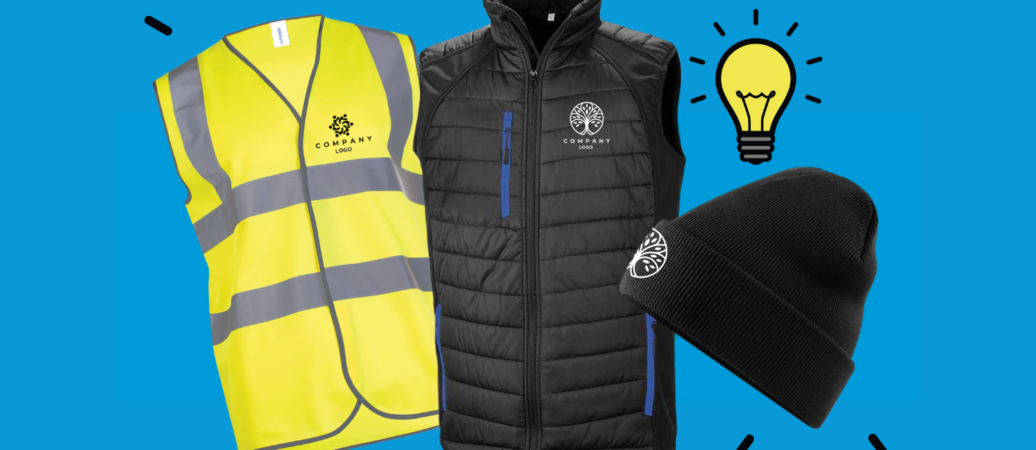Branded Clothing for Active Lifestyles: What Fabrics Support Performance?
Branded Clothing for Active Lifestyles: What Fabrics Support Performance?
Blog Article
Recognizing Apparel: The Importance of Fabric Options in Your Wardrobe
The option of textile in clothing plays a pivotal duty in both visual appeals and functionality. Different products use differing degrees of breathability, comfort, and durability, directly influencing the user's experience. Comprehending these nuances can improve one's closet noticeably. Several overlook how these choices can impact not just personal style, however likewise sustainability. What textile decisions could redefine your wardrobe and straighten it with both design and responsibility?
The Duty of Material in vogue and Capability

Common Fabric Types and Their Qualities
When selecting clothing, comprehending the qualities of typical material kinds is crucial for making informed selections. Cotton, a widely-used natural fiber, is recognized for its gentleness, breathability, and flexibility, making it appropriate for informal wear and day-to-day garments. Bed linen, an additional all-natural alternative, flaunts superb moisture-wicking residential properties and a distinctive texture, perfect for cozy climates.Wool, typically favored for its warmth and durability, differs in fineness; merino wool is soft versus the skin, while coarser kinds are made use of for outerwear. Artificial textiles like polyester and nylon offer sturdiness and resistance to wrinkles, making them popular for activewear and travel garments. Finally, blends, which integrate natural and artificial fibers, can boost performance while keeping convenience. By identifying these material features, individuals can choose apparel that straightens with their way of life and visual preferences.
Breathability and Comfort: Picking the Right Fabrics for Different Environments
Choosing the right materials for numerous climates can considerably improve convenience and overall wearability. Breathable products are essential in hot climates, as they permit air circulation and moisture dissipation. Fabrics such as cotton, linen, and moisture-wicking synthetics efficiently draw sweat away from the body, maintaining the user cool and completely dry. Alternatively, in cooler climates, thicker textiles like woollen or fleece give insulation while keeping breathability, guaranteeing warmth without overheating.Additionally, the selection of material weight plays an important duty; lightweight materials are more effective for summertime, whereas much heavier options are fit for winter season wear. Understanding the unique properties of each material enables people to clothe suitably for varying weather problems. Ultimately, picking comfortable and breathable materials tailored to specific climates can greatly boost daily comfort and improve the general experience of wearing garments.
Durability and Treatment: Just How Material Influences Longevity of Your Wardrobe
Choosing the best products can considerably affect the toughness and care requirements of a closet. Fabrics such as cotton and polyester are understood for their strength and ease of upkeep, making them excellent for everyday wear. On the other hand, delicate materials like silk and lace require even more cautious handling and specialized cleaning methods, which can raise the time and effort needed for care. Branded Clothing.Durability is likewise influenced by the material's weave and surface; securely woven materials have a tendency to resist deterioration far better than freely woven choices. Furthermore, synthetic blends commonly supply improved durability, integrating the most effective qualities of multiple fibers.Understanding the care directions for each fabric is necessary, as incorrect cleaning or drying can cause early wear. Ultimately, choosing resilient products can bring about a longer-lasting closet, lowering the regularity of replacements and contributing to a more sustainable style selection
The Impact of Textile on Fit and Shape

Sustainable Textile Options: Making Eco-Friendly Decisions
The impact of textile extends past fit and shape to encompass environmental factors, triggering a growing interest in lasting textile selections. Environment-friendly textiles, such as organic cotton, hemp, and Tencel, are gaining traction amongst consumers who prioritize sustainability in their wardrobes. These products are typically generated with less chemicals and water, reducing their eco-friendly footprint.Additionally, recycled materials, made from post-consumer waste, supply a cutting-edge remedy to the fabric industry's contamination problem. Brands increasingly accept transparency in their sourcing methods, allowing customers to make informed choices concerning their purchases.Choosing lasting fabrics not just sustains moral methods however also urges the style market to adopt even more liable production approaches. As awareness of environmental issues rises, people are prompted to reflect on the long-term impact of their textile selections, promoting an activity my website towards an extra environmentally mindful and sustainable strategy to fashion.
Boosting Design: How Textile Can Transform a Clothing
While many might concentrate on color and cut when selecting a clothing, the selection of textile plays an essential function in boosting style and enhancing overall look. Various products share distinctive state of minds and messages; for example, silk shows luxury and refinement, while denim provides a casual, kicked back vibe. The appearance and drape of a fabric can dramatically change the shape, with structured fabrics providing a sleek look and softer ones creating a more fluid, kicked back aesthetic.Moreover, the weight of the textile affects wearability throughout periods. Light-weight textiles like linen and cotton are ideal for summer, while much heavier products such as woollen and velvet offer warmth and style in chillier months. Recognizing material homes, such as breathability and stretch, likewise equips individuals to make informed selections that boost convenience without compromising style. Inevitably, the ideal textile can change an outfit from regular to remarkable, making it an important consideration in any closet.
Regularly Asked Concerns
How Do I Recognize the Fabric Content of My Apparel?
To recognize material content, one can take a look at treatment labels, conduct burn examinations for fiber recognition, or get in touch with textile examples. These approaches assist distinguish products, making sure informed options for clothing care and maintenance in everyday wear.
Can Material Option Affect My State Of Mind or Confidence?
Fabric selection can substantially affect an individual's mood and self-confidence. Branded Clothing. Certain products may stimulate sensations of convenience or beauty, while others can really feel unflattering or restrictive, inevitably influencing self-perception and emotional health throughout the day
What Fabrics Are Best for Delicate Skin?
For individuals with delicate skin, natural materials like cotton, linen, and bamboo are usually suggested. These materials are breathable, hypoallergenic, and much less likely to create inflammation, making them suitable options for comfort and skin wellness.
How Do I Correctly Clean and Take Care Of Different Fabrics?
To appropriately care and clean for various fabrics, one should consider each product's specific needs, consisting of temperature level setups, detergents, and drying out approaches, guaranteeing long life and preserving the textile's original qualities for suitable use.
Exist Specific Fabrics for Athletic or Performance Put On?
Athletic or performance wear typically makes use of fabrics such as polyester, spandex, and nylon. These materials are designed for moisture-wicking, breathability, and flexibility, enhancing activity and convenience during exercises while supplying sturdiness and assistance. On the other hand, in cooler climates, thicker textiles like woollen or fleece provide insulation while retaining breathability, guaranteeing warmth without overheating.Additionally, the selection of material weight plays an important role; light-weight materials are better for summer, whereas heavier options are suited for winter months wear. In comparison, fragile products like silk and shoelace require even more mindful handling and view it specialized cleansing techniques, which can enhance the time and effort needed for care.Durability is also influenced by the material's weave and coating; firmly woven fabrics tend to stand up to wear and tear far better than loosely woven alternatives. In comparison, stiff textiles can restrict activity but supply a traditional, sleek look.Moreover, the thickness and structure of the fabric can affect the visual assumption of body form. The influence of material prolongs beyond fit and shape to incorporate environmental factors, prompting a growing passion in lasting fabric selections. The texture and drape of a textile can dramatically modify the silhouette, with organized materials providing a sleek look and softer ones developing a much more fluid, unwinded aesthetic.Moreover, the weight of the textile influences wearability across periods.
Report this page